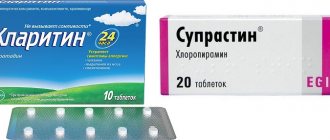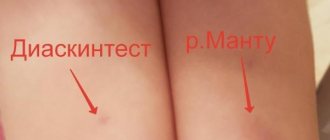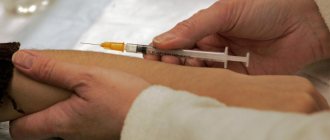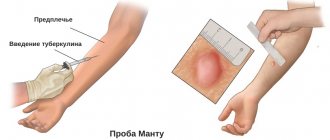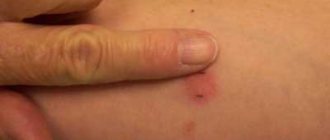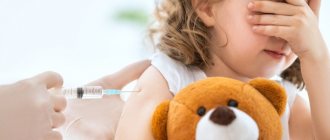Mantoux is not done often - the standard schedule involves diagnosing tuberculosis once a year. Only clear medical indications are the reason for increasing the number of samples per year to 2-3. If BCG was not given in the maternity hospital according to the calendar, then after 2 months Mantoux is first performed and only after that, if the result is negative, can vaccination be performed.
The Mantoux schedule is observed once a year for both preschool and school-age children. For adults, the test is performed with the same frequency until the age of 16, then the manipulation can be performed once every few years and only at the request of doctors. From the age of 35, the procedure becomes impractical.
How often do preschoolers make Mantoux, how many times a year?
Mantu is given to preschool children once a year. The first vaccination against tuberculosis is given in the maternity hospital on the 3-5th day of the baby’s life (depending on the general condition of the newborn, complications during childbirth and other indicators).
The Mantoux test is performed no earlier than 12-13 months after BCG, and it is rarely perceived by doctors as informative - the antibodies produced as an immune response to the vaccine are still active in the child’s body.
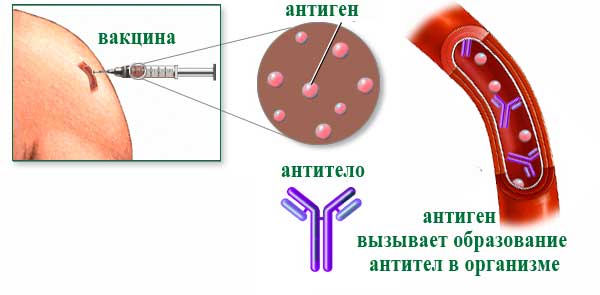
Subsequent tests are carried out every year - in the 2nd, 3rd and so on.
How to Avoid Negative Reactions
To avoid allergic nonspecific reactions, that is, not related to tuberculosis, you need to:
- carry out diagnostics with the Mantoux test only after eliminating contraindications (skin diseases, infections, exacerbation of diseases, including allergic ones, epilepsy);
- if there is a quarantine for any child infection in a kindergarten or school, the test is postponed for 1 month after it is lifted;
- if you are prone to allergies, the doctor may prescribe 3 days before Mantoux and 3-5 days after the tablet (for example, Loratadine); you cannot use them on your own;
- From the diet for 2-3 days before and after the test, it is necessary to exclude foods to which the patient is allergic; do not abuse sweets, citrus fruits, strawberries, nuts, chocolate, eggs, or introduce new dishes into the diet.
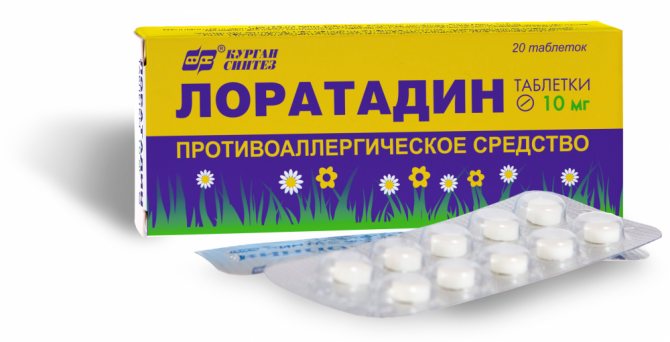
Mantoux reaction: when is it done and how often in schoolchildren
The Mantoux test is performed with a certain frequency and for schoolchildren – once a year. They try to carry out this manipulation en masse, so it is possible to reduce the frequency of tuberculin administration, but in any case, at least 6 months must pass between procedures.
From the age of 14, the Mantoux test may not be performed at the request of the parents; diagnostics can be carried out by performing fluorography.
We recommend reading about the nuances of staging Mantoux per year. From the article you will learn about when Mantoux is prescribed per year, how it is tolerated, what complications there may be, assessing the results of the Mantoux test, and how to measure the papule yourself. And here is more information about the peculiarities of holding Mantoux at 15 years old.
What are the negative effects of Mantoux in children?
The negative effects of Mantoux in children include nonspecific and specific reactions to tuberculin. In the first case, this means that there is a tendency to allergies or individual intolerance to the components of the drug (phenol, polysorbate Tween-80, protein particles). Children and adolescents experience:
- skin rashes;
- skin itching;
- swelling;
- pain and severe redness on the first day after the test.
All these signs most often subside within 2-3 days; sometimes the use of allergy medications (for example, Suprastin) is required. If the body is infected with Mycobacterium tuberculosis, then after the introduction of the tuberculin allergen a specific allergic reaction develops:
- papule with a diameter of 17 mm;
- blisters and pinpoint blackening of the skin at the injection site;
- thickening and enlargement of lymph nodes.
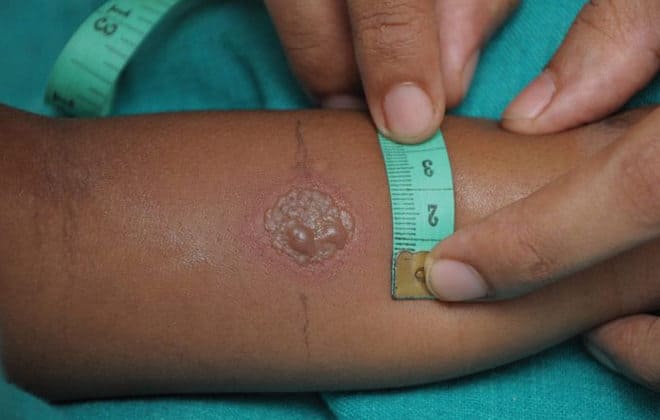
In such cases, it is necessary to contact a phthisiatrician and complete examination for tuberculosis infection. Typically, patients with such symptoms are prescribed anti-tuberculosis drugs in prophylactic or therapeutic dosages.
What happens if the vaccine is given for a cold?
Vaccination (more precisely, skin test) Mantoux should not be administered for a cold, but if the disease is not detected in time, then the only consequence is an incorrect test result. Since the tuberculin test reflects the functioning of the immune system, the following are possible:
- false positive results (there is no infection, but the papule is large), more often this happens with a bacterial infection (for example, sore throat);
- false negative test data (there is infection with tuberculosis, but the papule is absent or smaller in diameter), such a change is typical for viral diseases.

The Mantoux test will not affect the course of a cold in any way. To obtain an accurate result, at least 1 month must pass after the disappearance of all symptoms of respiratory disease (ARD). If, at the time of measuring the papules, the doctor detects obvious signs of infection, it is recommended to first undergo treatment and after 30-45 days undergo the Mantoux test again.
What harm can it do to a sick child?
If Mantoux is given to a child who is not suffering from tuberculosis, but from any other infection, then there will be no harm or any noticeable reaction. This is explained by the fact that when tuberculin is administered, only parts of mycobacteria enter the body; they cannot affect the immune system.
The test itself is diagnostic; it reflects the current state of the immune system, but cannot change it. If there is already an infection with tuberculosis, the Mantoux reaction is clearly pronounced, but still it is not related to the severity of the disease.
How often can you make Mantoux?
You can make Mantu often - 2-3 times a year, but only if there are prerequisites for this:
- the papule at the site of tuberculin injection increases from year to year;
- the child is constantly in contact with tuberculosis patients;
- the child is likely to have HIV infection (for example, both or one of the parents are sick).
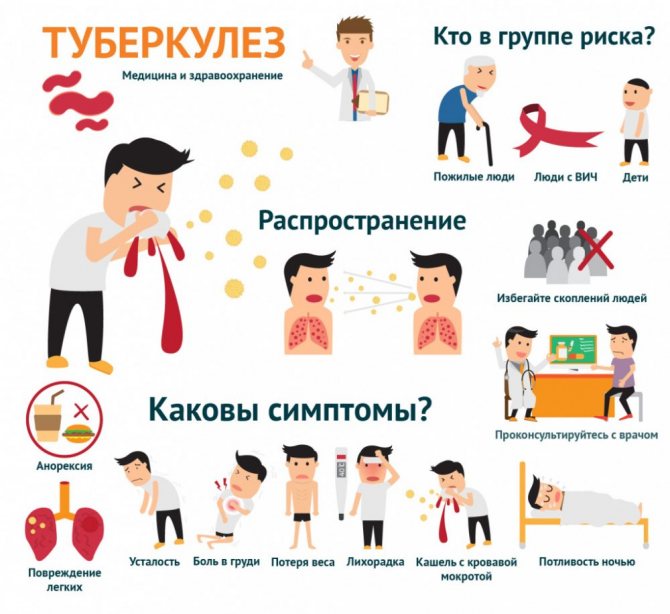
- with diabetes mellitus;
- with frequently recurring colds and viral pathologies of the respiratory tract;
- with diagnosed blood diseases;
- with constant elevated body temperature to subfebrile levels of unknown origin;
- with diagnosed/confirmed systemic pathologies.
The decision to perform the Mantoux test more frequently is made by the pediatrician and phthisiatrician.
Watch this video about what the Mantoux test is and why it is important to carry it out among children:
- home
- Right menu
- Vaccination school
- Question answer
- Vaccination for everyone: SIMPLE answers to DIFFICULT questions
- Phenol in tuberculin: is the Mantoux test dangerous?
Phenol in tuberculin: is the Mantoux test dangerous?
— Is it true that phenol is a well-known protoplasmic poison, toxic to all cells of the body without exception!
The diagnostic tuberculin Mantoux test has been widely used in Russia since 1965, and the tuberculin used for it was approved by WHO as a standard back in 1952. For at least three generations of people have come with their children to receive a “button”, but only in recent years has tuberculin diagnostics been performed was suddenly declared a “health hazard.”
Someone suddenly read that tuberculin contains phenol. And so it began!
1) Phenol can cause shock, weakness, convulsions, kidney damage, heart failure, and is toxic to all cells of the body!
2) Phenol causes leukemia!
3) Phenol affects the nervous system!
At the same time, fighters against the Mantoux test are not embarrassed by the fact that phenol as a preservative is used, in addition to tuberculin, in a huge number of other medications, including those for parenteral administration. Mothers of children with allergies refuse the Mantoux test for fear of phenol, but do not object to the diagnostic intradermal injection of allergens containing 0.2-0.4% of the same phenol! Many people’s favorite fucorcin, which is used to treat even mouth ulcers, contains 3.9% pure phenol. Phenol as a preservative is found in insulin, suppositories, antiseptics for gargling, ear drops, and various other drugs. At the same time, phenol is very well absorbed through intact skin and mucous membranes and can actually cause poisoning, even when used externally.
That's not all. You can compile an impressive list of drugs that are converted into phenol during metabolism in the body. And this list will be headed by none other than paracetamol (paraacetylaminophenol), which, based on many studies around the world, is considered the safest children's medicine for “fever.”
So, is the pharmaceutical industry out to poison everyone?
Of course not! Phenol is toxic, but in much higher doses than those contained in medications (including tuberculin). According to reports from toxicologists, phenol poisoning is associated with its ingestion or inhalation in large doses. More often, these are industrial hazards or accidents. Chronic poisoning can develop with constant and long-term intake of small doses, for example, drinking drinking water contaminated with phenol. Also rare, but phenol poisoning occurs when it is absorbed through the skin. It is not for nothing that all phenol-containing ointments indicate that they should not be used on large areas of the body (especially in children).
Cases of phenol poisoning from the Mantoux test (or diagnostic allergens) are not described in the literature. But no one, not even the most staunch opponents of vaccination, claims that the Mantoux test can cause lethal phenolic poisoning.
Is it possible to get any health problems from the Mantoux test? We tried to find the following information in the toxicological literature: at what dose of phenol administered to the body does no biological effect occur? What dose of phenol is not associated with even minimal neurotoxicity, genotoxicity, carcinogenicity or any other consequences? In the Russian-language toxicological literature, lethal doses are mainly given for various routes of entry (higher for oral administration, smaller for inhalation). However, in English-language toxicological sources, the NOAEL indicator is used (according to observed adverse effect level), i.e., the dose at which no biological effects are OBSERVED (in laboratory studies, the minimum dose is determined at which a decrease in fetal weight in rats is not observed). So, for phenol the NOAEL is 60 mg/kg body weight.
In almost every anti-vaccination publication concerning phenol in vaccines and serums, one can find accusations that the safety of phenol in humans has not been studied. These accusations are not entirely fair. In fact, the toxic effects of phenol on humans have been studied, and studied well. However, experimental data on a safe dose of phenol during chronic intake (as for many other potentially toxic substances) are absent for an obvious reason - such experiments cannot be carried out on humans. In such cases, in world practice it is customary to use the so-called uncertainty factor (UF). The NOAEL indicator obtained for animals is reduced by 100 times - to be on the safe side. Using the NOAEL obtained from experiments on pregnant female rats and the uncertainty factor, the dose of phenol safe for daily human consumption is set at 0.6 mg per 1 kg of body weight. The harmlessness of this dose to humans has been confirmed by numerous observations of entire populations consuming water or food containing small doses of phenol: no evidence of any negative manifestations has been established. In this case, it is quite possible to extrapolate the data obtained from oral administration of phenol to its subcutaneous administration. As mentioned above, phenol is perfectly absorbed; when it enters the gastrointestinal tract and respiratory tract, it is adsorbed by 100%, and by skin contact - by 80%.
Among the studies studying the kinetics of phenol in the human body, of great interest is the study by Morrison et al., devoted to the study of the dynamics of phenol in the blood of pediatric patients to whom it was administered for the purpose of neuromuscular blockade. Even before the start of treatment (and without any vaccination), phenol was detected in the blood of children at a dose of 0.3 to 0.8 mg/ml; after the procedure it increased to 36 mg/ml, and after 2 hours it decreased by approximately 1/3.
The Mantoux sample contains 0.25 mg of phenol, i.e. for a child weighing 8 kg this is 0.03 mg/kg, which is 20 times less than the dose of safe daily intake. I would also like to emphasize - daily, but the Mantoux test is not carried out every day. And not even monthly. And if you compare it with the physiological level of phenol in the blood, you get that one dose of tuberculin contains approximately the same as 1 ml of blood (Fig. 18).
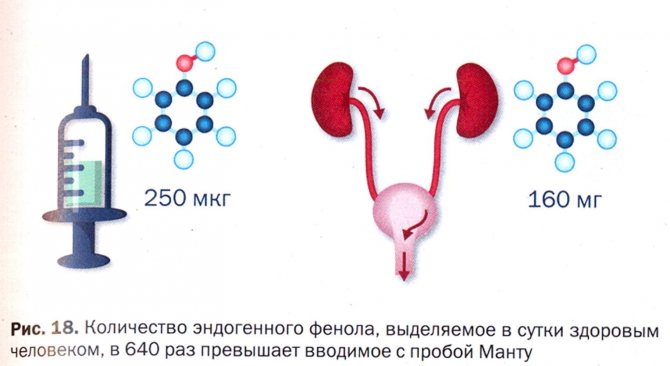
In fact, all of us, including small children, inhale, drink and eat daily amounts of phenol that are many times greater than the content in the Mantoux test. In the environment, phenol is present not only as a man-made pollutant, it also exists in nature: phenol and its derivatives are found in wood, peat, coal, and oil. These compounds are present in plant cells: for example, pine cones and needles contain quite a lot of phenol, since in biological objects phenols are involved in redox metabolic reactions. Phenol is found in cheese, fish, chicken meat, tobacco smoke and tea, and is released from resins covering furniture and synthetic fabrics. In addition, the body also contains endogenous phenol, which is formed as a metabolite in the tissues of the body itself and in the intestinal contents as a result of the activity of bacteria.
It should be added that the mutagenic effect of any doses of phenol in relation to mammals (and humans too) has never been observed. Phenol has not been proven to be carcinogenic , despite ongoing experiments and years of observation of people exposed to chronic phenolics. The International Agency for Research on Cancer does not classify phenol as a human carcinogen (2004).
How often is Mantoux given to adults, and up to what age is it done?
Mantoux is not often given to adults, but only according to indications:
- the doctor has good reason to suspect the patient has extrapulmonary tuberculosis;
- the patient has recently undergone radiotherapy, radiography or any other radiation exposure;
- a person undergoes long-term treatment with certain medications (glucocorticosteroids, immunosuppressants).
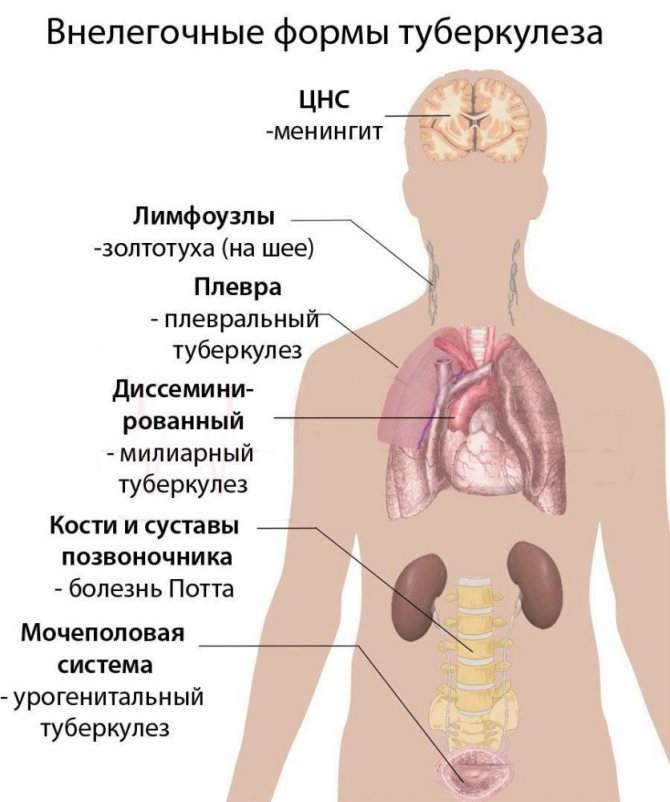
After the age of 16-18 years, the Mantoux test is done extremely rarely, unless there are clear indications for it. After reaching the age of 35, such manipulation is performed only at the request of doctors.
Most often, Mantoux is given to those adults who are at risk - they are in constant contact with patients, live in a region that is unfavorable specifically for the incidence of tuberculosis, work in correctional colonies, and so on.
Due to age-related changes in the human body, the Mantoux test is considered to be of little information; it is advisable to rely on fluorography data in diagnosis.
To do or not to do the Mantoux test?
Despite conflicting opinions, tuberculosis should still be diagnosed. The situation, unfortunately, is unfavorable; in most regions of the country there is a high risk of becoming infected through contact with carriers of the disease. Parents who are deeply convinced that the harm from the Mantoux test is obvious may abandon it in favor of other examination methods.
An alternative could be, for example, the Diaskintest test. It is offered by pediatricians if there are contraindications to performing Mantoux in children. The composition of the drug is slightly different, and the diagnostic results are more accurate. The main thing is that when performing Diaskintest, there is less likelihood of rashes, swelling, and other side effects.
When can you take a test?
The test can only be done on an absolutely healthy child - this fact is established by the doctor during a preliminary examination of the child as part of the preparatory stage. In some cases, a medical diversion from tuberculin administration may be placed:
- elevated body temperature, regardless of the presence/absence of signs of disease;
- runny nose, even in the initial stage of its development;
- cough of any type - dry, wet, infrequent, paroxysmal;
- dermatological diseases in the acute phase of their course;
- problems in the functioning of the digestive system, regardless of the nature of the origin.
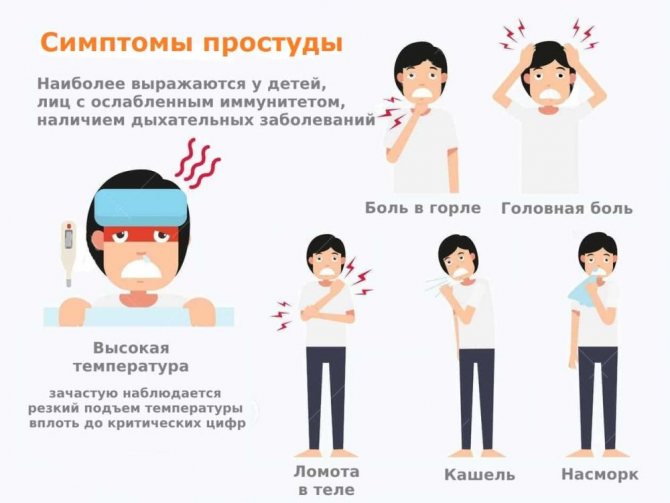
These conditions are conditional contraindications; the Mantoux test is performed after the child has fully recovered. But there are also pathologies in which the administration of tuberculin for diagnostic purposes is strictly contraindicated:
- epilepsy;
- malignant neoplasms;
- bronchial asthma;
- allergy to any irritant;
- child's age up to 1 year;
- confirmed human immunodeficiency virus.
Why is it important to stick to a set schedule?

According to medical statistics, every fourth person in the Russian Federation is a carrier of the tuberculosis bacillus in the active phase.
In addition, every tenth person has tuberculosis in a latent (passive) form. Based on this, we can conclude that the risk of contracting this disease is very high.
If the Mantoux vaccination was carried out according to the schedule with the appropriate vaccine, then based on the results, medical staff can take appropriate measures to prevent the progression of the disease.
By following the Mantoux vaccination schedule for adults and children, it is possible to reduce the number of infected individuals, identify the disease at the stage of the pathological process and stop further progress. This is only possible if every person conscientiously undergoes tuberculin testing.
In the Russian Federation, it is possible to refuse vaccination, provided that there is an allergy to Mantoux or other compelling reasons. Simply put, every person undergoes a thorough background check.
However, if diagnostic measures are not carried out in a timely manner, open panic may begin, and the state will be faced with a real wave of the epidemic, as well as a number of other problems.
Firstly, there is a psychological tension in society and its small units - the family, as well as a tense situation with sick children.
Secondly, these are the costs of arrangement and supply of the required funds for rehabilitation. In the Russian Federation there are many dispensaries designed to treat patients, but there are too few of them to prevent a possible epidemic.
Is it possible to do Mantoux and BCG at the same time according to the vaccination calendar?
The vaccination schedule does not imply the simultaneous performance of the Mantoux test and BCG. According to the regulations, if a child is not given BCG for some reason in the maternity hospital, then the procedure can only be performed after the Mantoux test has been performed.
This rule applies to cases where the BCG vaccination was not given until the child was two months old.
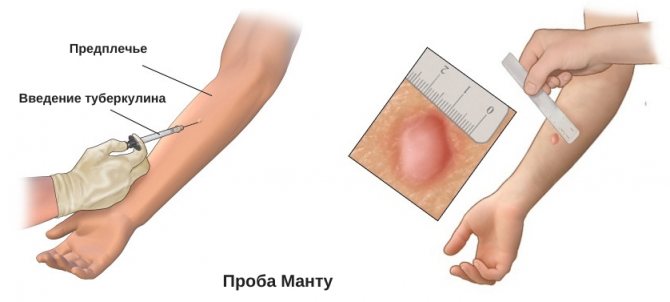
Vaccination after tuberculin administration should be carried out no earlier than 3 days and no later than 2 weeks. A prerequisite is that the Mantoux result must be unconditionally negative.
Mantoux test: absolute contraindications in children
Absolute contraindications for the Mantoux test in children are:
- skin diseases (dermatitis, psoriasis, etc.);
- acute infections;
- epilepsy and other somatic pathologies;
- chronic infections;
- neurological diseases;
- bronchial asthma;
- allergy;
- rheumatism.
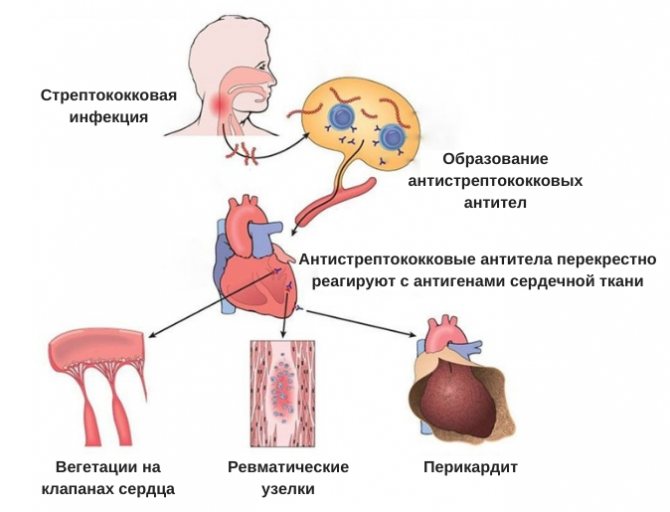
The test cannot be performed in the acute stage of pathologies. But in some children it occurs so often or is replaced only by subacute that the medical withdrawal at diagnosis is made permanent.
These are, for example, frequent attacks of epilepsy or asthma, and it is impossible to predict when and why the next one will begin. Or the tumor disease is in remission. Even if it lasts for several years, it is also impossible to predict when the disease may return to active. Therefore, Mantoux is not prescribed at all - “out of harm’s way.”
Doctors identify contraindications using medical documents, questioning and examining the patient. If there are complaints or symptoms of exacerbation, tests are prescribed.
What will limit the holding per year?
Theoretically, every year, doctors may refuse to perform tuberculin diagnostics for the same reasons as specified in Appendix No. 4 to Order of the Ministry of Health No. 109 of 2003.
But in practice it is postponed for atopic dermatitis, allergies, neurological pathologies, oncology, that is, diseases that can be detected at this age. Or if you suspect them. The reason to cancel the test is the child’s poor health, manifested by fever, runny nose, digestive disorders, etc.
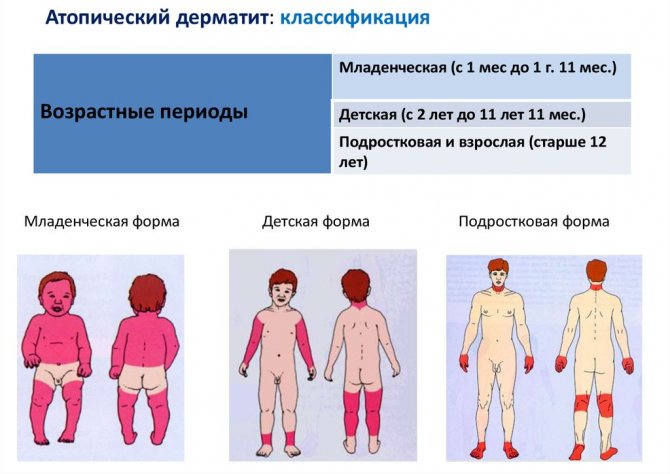
Who gives medical advice
Who to contact for medical advice depends on the reason for refusing the tuberculin test:
- in case of exacerbation of a chronic disease, a pediatrician is needed;
- for allergies - an allergist;
- if the child is registered with an immunologist, you need to go to an appointment with this specialist;
- for neurological diseases, go to a neurologist;
- for rheumatism - see a rheumatologist.
The doctor must issue a certificate confirming the ban on performing the test for a certain period or indefinitely. If tuberculin diagnostics are going to be carried out in a kindergarten or school, the medical worker of the institution must be aware of the medical discharge.
On what days are Mantoux performed?
Most often, the Mantoux test is performed on certain days - Monday and Tuesday, which allows you to evaluate the results of tuberculin administration before the onset of the weekend (after 72 hours). The fact is that weekends carry the risk of violating the rules for caring for the “button” - a child can visit a cafe with his parents and consume a known allergen, it is possible to go to a pool or water park, or visit guests. And these situations can provoke stress, which will give unreliable results.
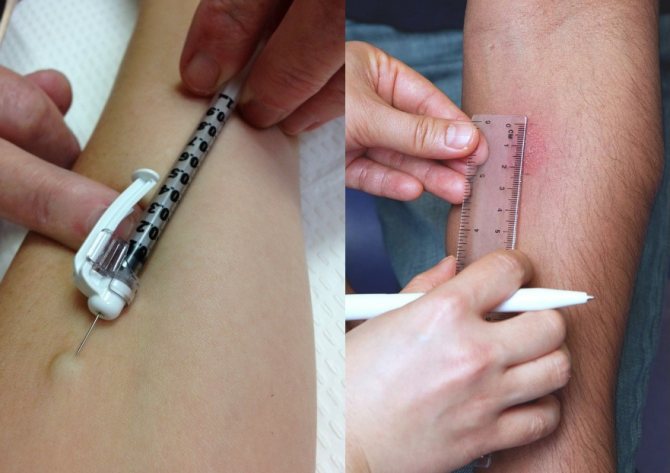
Where can Mantu be given to children under 3 years old?
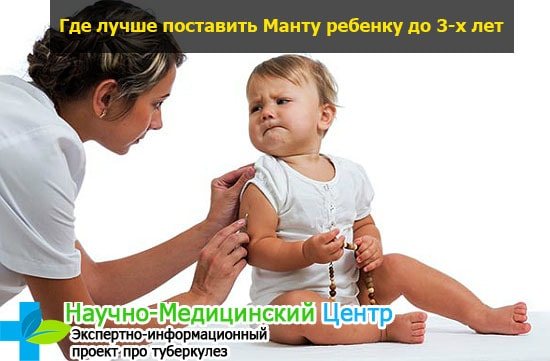
For young children, there are two vaccination programs, paid and free.
At birth, the child is vaccinated free of charge, according to the state program for guaranteeing free tuberculin diagnostics. After the first vaccination, every year, you need to re-vaccinate at the clinic at your place of residence. The injection is performed on a paid basis.
During a visit to a primary educational institution (school), all questions about vaccination are resolved by the director of the institution, as well as the responsible person in the medical field. This happens in every school.
Every year, in the autumn (October or November), children at school are given a form, which they must give to their parents (in some educational institutions, a parent meeting is organized on this occasion). In the form, the parent must indicate whether he agrees to give Mantoux to the child or refuses, and note the reasons for the refusal (if there is a contraindication).
It is worth knowing that vaccination is carried out according to the state program for tuberculin diagnostics. If the medical staff at the hospital requires you to pay for the vaccination, it is recommended that you refuse their services. They may have a low-quality or untested vaccine that could harm the child’s health.
You need to stay away from such institutions, because you don’t know what to expect. If you were vaccinated on a paid basis, but in a private clinic, there is no reason to worry.
If you are dealing with paid vaccination, then the parent is obliged to notify the medical person responsible for the child about this. The service is carried out in any private clinic. Experts in the medical field recommend that the injection be included in the vaccination schedule and using the state program for tuberculin diagnostics.
How long does it take to check the reaction?
The reaction to the administered tuberculin is checked no earlier than 72 hours from the test. Neither sooner nor later does it make sense to take measurements of papules or redness - the data will be distorted, which will entail the need for revaccination or an extensive examination by a phthisiatrician.
We recommend reading about why Mantoux is placed before BCG. From the article you will learn how many days after BCG is given after Mantoux, when the vaccination cannot be done, and whether Mantoux can be done without BCG. And here is more information about whether it is necessary to make Mantoux.
Mantoux is given to children of preschool and school age with a certain frequency. A clear schedule minimizes the risks of obtaining distorted results and developing side effects. Typically, the test is performed once a year, but at the discretion of the doctor, the frequency can be increased.
Is it possible to place manta? How does the procedure work?

Before performing the Mantoux test, the child is examined by a doctor. The procedure should be rescheduled if:
- the baby has a fever;
- he has a cold or has any other infectious or inflammatory disease;
- the child is actively teething;
- there are skin rashes.
If everything is fine with the baby, a test is given subcutaneously on the inside of the forearm. A papule – a “button” – forms at the injection site. There are no strict restrictions on food or daily activities after the test. It is not recommended to eat a lot of sweets or allergenic foods, but a child does not receive them per year in such quantities that can distort the diagnostic picture. You can swim after Mantoux. Water affected the results of the test, which was applied externally in the form of a scratch. They haven't done it like that for a long time. Walking is also not prohibited. There is no need to tape the injection site, but you should make sure that the child does not rub or scratch it, so that clothing does not press on it. After 72 hours, that is, after three days, the doctor will measure the papule or redness in its place with a transparent ruler. Normally, a child’s size will be from 5 to 11 mm per year. If the reaction to the test is negative - by the time of control only a trace of the injection remains - or questionable, when the papule is 4 mm or less, as well as in the case of a strong positive reaction, the child will be assigned additional control.
Mantoux: contraindications and complications in adults
Mantoux has the same contraindications and complications in adults as in children, but with additions:
- systemic diseases;
- allergies, including to tuberculin;
- cancer or other types of tumors;
- neurological pathologies;
- dermatological problems;
- menstruation and pregnancy in women;
- any chronic diseases in the acute stage.
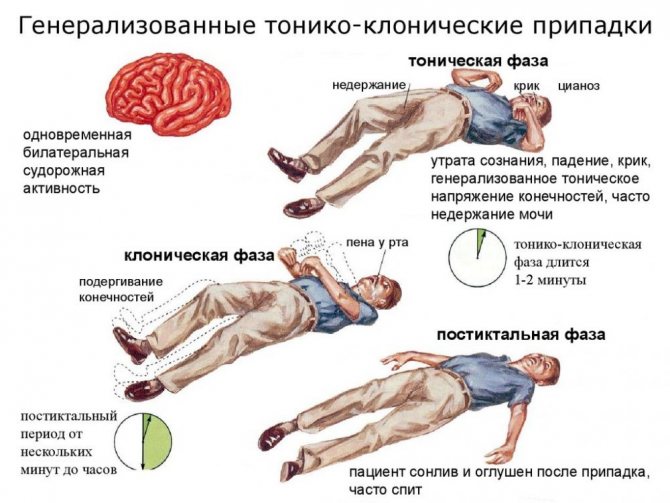
The test can not only cause deterioration in health and exacerbation of diseases, but is also often incorrect. There are too many factors present in adults that can affect the outcome (fewer in children). Therefore, after 18 years of age, such diagnostics are rarely prescribed. After all, there are more informative ways to detect tuberculosis, the most common is annual fluorography.

